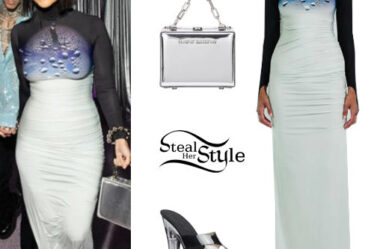
Last year, when the Sustainable Apparel Coalition (SAC) pushed its 250-plus member brands to publish ratings of their products’ sustainability performance by 2025, the trade body framed it as a major stride towards more credible and trusted communication on the eco-credentials of garments, a complex and increasingly fraught topic.
Instead, the programme has become the target of a greenwashing crackdown that’s thrown the industry’s highest-profile effort to back up sustainability claims into question.
In June, Norway’s consumer watchdog ruled product labels backed by material impact data from the SAC’s Higg Index were misleading, prompting the organisation to put the initiative on pause, commission a third-party review of the tool and announce plans to double down on data collection.
The criticism reflects a heated and increasingly mainstream debate over what actually counts as sustainable fashion, and how it should be measured and marketed.
The Higg Index is the closest the industry has to a standardised set of metrics, but its methodology and the data it uses to assess the impact of various different materials have become points of controversy, with critics ranging from independent experts to lobby groups for natural fibres.
The SAC isn’t the only one in the hot seat. UK regulators are investigating claims made by brands including Asos and Boohoo. Last month, H&M and Decathlon agreed to dial back their sustainability claims and donate hundreds of thousands of dollars to initiatives combating fashion’s environmental impact to avoid sanctions by Dutch authorities.
But if the embarrassing series of public critiques point to faults in the system, now regulators are turning their attention to new rules designed to fix them.
Dutch and Norwegian regulators have published new guidelines outlining how the SAC should address issues with the Higg Index’s material assessments, foreshadowing broader regulatory action by the European Union.
The guidance, though not a formal legal framework, is sound advice for the whole industry. Here’s a crib sheet:
Plug Data Gaps
Establishing quality datasets is a big challenge, particularly as the impact of a material may vary considerably depending on where and how it is produced. Where data doesn’t exist, or there’s disagreement over its quality or validity, the industry needs to invest in improving it.
Verify Findings
Trusted and credible claims can’t be built simply on industry say-so. Data, and the methodology underpinning it, should be reviewed by an independent third party, with the assessment repeated periodically to ensure information remains up to date and relevant.
Contextualise Claims
Sustainability is a complex topic that covers a multitude of environmental and social issues. Measuring all of those is an ongoing challenge and brands should take care in any marketing that exactly what is being measured is clear and any gaps are also communicated.
The topic is complex but, boiled down, the guidance is ultimately simple: So long as brands can back up marketing claims and are presenting them in a way that’s plain to the average consumer, they should be in the clear.
In practice, this means many brands will need to rethink the way they formulate their sustainability marketing. But the shift towards clearer, more uniform standards is only helpful.
For more BoF sustainability coverage, sign up now for our Weekly Sustainability Briefing by Sarah Kent.



